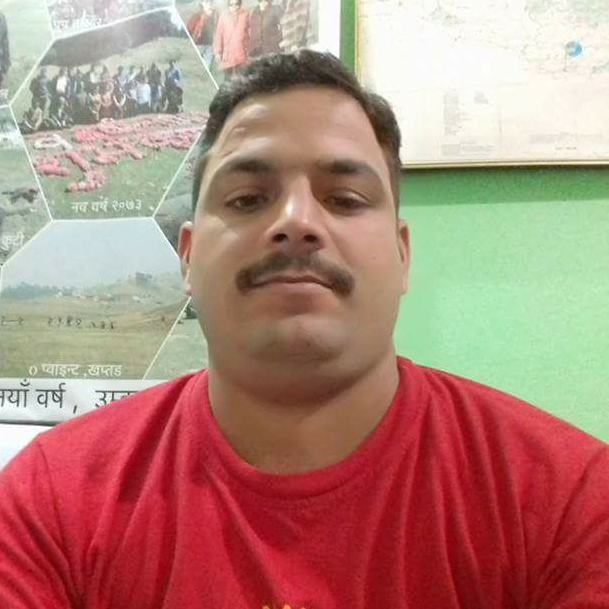Sudurpaschim Province
Kanchanpur fails to tame stray cattle despite spending millions
In the past six years, Kanchanpur local units have spent nearly Rs100 million for the task.
Bhawani Bhatta
Ram Lal Rana, an autorickshaw driver in Mahendranagar Bazaar in Kanchanpur, leaves the market area every day before the sun sets and drives home, cutting short his working hours. As evening descends, stray cattle take over the roads in Mahendranagar and disrupt vehicular movement, making driving in the town dangerous, Rana says.
Stray cattle along the roads in Mahendranagar, including the Mahendra Highway, cause about four to five accidents every year, according to Rana. “Several people have been seriously injured while some have died in the accidents.”
According to the District Traffic Police Office, Kanchanpur, in the last five years, one person has died and 23 people have been seriously injured in 21 accidents in the Mahendranagar road section under the Mahendra Highway area alone due to stray cattle. Similarly, 17 stray cattle have also died.
According to Police Inspector Naresh BK, head of the District Traffic Police Office, Kanchanpur, most of the accidents have happened at night. “Last year, we started putting radium paint on the stray cattle in order to prevent accidents, but that drive failed due to a lack of budget. There are just too many stray cattle in Mahendranagar area,” said BK. “This year, we are planning to use reflective straps on the cattle. Discussions are going on with the local unit authorities to make this campaign successful.”
Besides causing road accidents, stray cattles have also caused damage to farmers and their fields, says Janak Bhatta, a local farmer from Bhimdatta Municipality’s ward 10. “Farmers have had to bear losses of up to Rs100,000 every season. Some of the farmers have put up fences to prevent the stray cattle from entering the fields but not everyone can afford to do so. Fencing one’s farmlands can cost anywhere between Rs40,000 and Rs50,000,” Bhatta said. “Farmers who cannot protect their fields suffer in silence and bear the losses since there are no government subsidies for crops destroyed by stray cattle.”
According to Mahendra Khadka, spokesperson for Bhimdatta Municipality, the problem of stray cattle started almost a decade ago, and since then, they have spent millions on managing the strays. Despite the efforts of the municipality, the number of stray cattle is increasing every year.
“From the fiscal year 2017–18, the municipality has spent almost Rs20 million for the management of stray cattle,” Khadka said. “In the current fiscal year, we have allocated Rs10 million. Out of the two cattle rearing farms in the municipality, one is operational. The other farm with the capacity to hold 50 cattle at a time had to be shut down because we had reached the end of the lease agreement with the land owner.”
Bedkot Municipality, another local unit in Kanchanpur troubled by the growing number of stray cattle, has allocated Rs4 million for the management of stray cattle in the current fiscal year.
“Last year, the locals whose crops were destroyed by stray cattle protested and demanded proper management of the cattle and protection of the fields and crops,” said Padmaraj Bhatta, administrative officer of the Bedkot Municipality. “Following the example of Bhimdatta, we are now in the process of building cattle rearing farms. Hopefully, it will provide some respite to the farmers.”
Dodhara Chandani Municipality has established eight cattle rearing farms in community forests, where more than 700 cattle are brought from the streets. The municipality spends Rs2.5 million to Rs3 million every year for the management of stray cattle.
Ganesh Mishra, administrative officer of the Dodhara Chandani Municipality, said that in the last six years, they have spent Rs20 million on the management of stray cattle.
In the fiscal year 2018-19, the veterinary hospital and animal services expert centre in Kanchanpur sent 150 stray cattle from the district to hilly areas such as Bajhang and Bajura, but the translocation was an expensive undertaking. According to the centre, it cost around Rs1,000 per cattle to transport them to these hilly districts.
There are seven municipalities and two rural municipalities in the district, and according to the District Coordination Committee, Kanchanpur, in the last six years, the local units have spent almost Rs100 million on the management of stray cattle.
Madan Singh Dhami, secretary of the Ministry of Land Management, Cooperatives, and Poverty Alleviation, Sudurpaschim, said that the stray cattle problem in Kanchanpur has drawn the attention of the ministry.
“There have been several studies and research in the field of stray cattle and how to manage them, but the local level government has failed to implement them,” Dhami said. “The ministry will provide additional help by allotting land and developing physical infrastructure for the management of the cattle.”




 9.12°C Kathmandu
9.12°C Kathmandu











%20(1).jpg&w=300&height=200)

